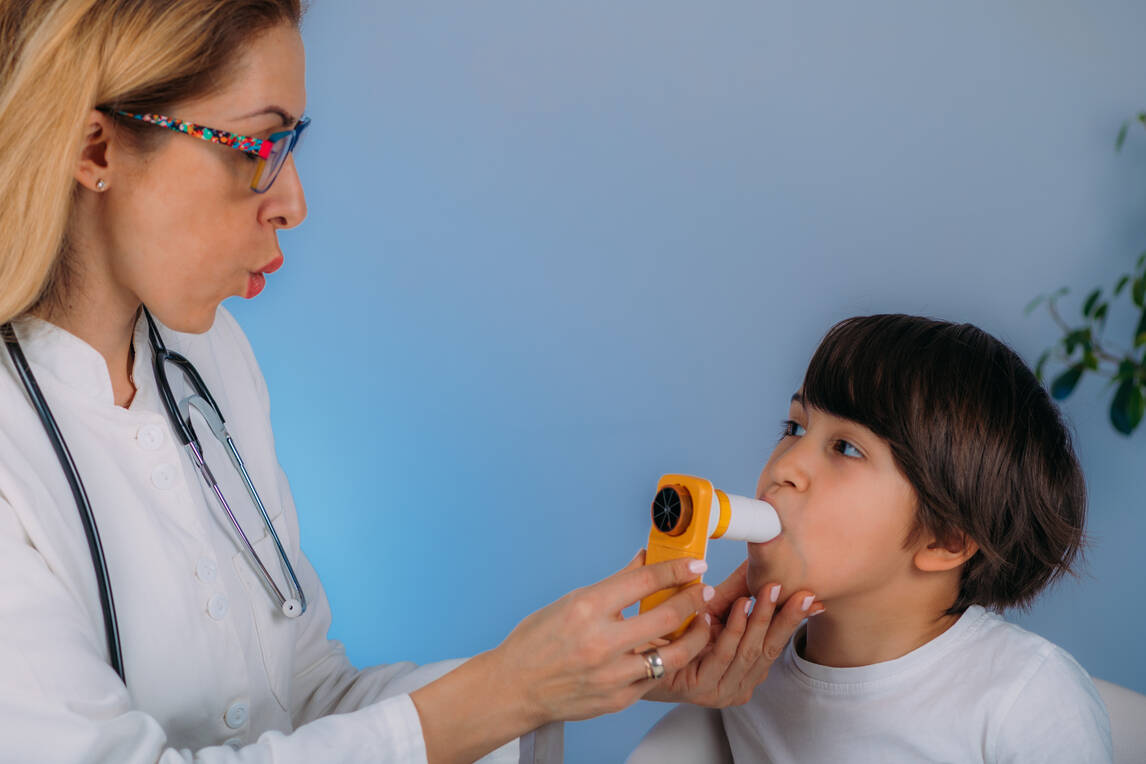What is Spirometry Test and It's Importance?

The spirometry test is a procedure to assess the functioning of your lungs. It measures how much air you inhale and exhale and how much time you take while exhaling. Doctors prescribe this test for diagnosing asthma, chronic obstructive pulmonary disease (COPD) and other ailments that affect breathing.
This article will give you a basic overview of the process, relative side effects, risks and how to read the test results.
What Is a Spirometry Test?
Spirometry is a diagnosing process of any breathing abnormalities. It is related to three basic measurements: volume, time and flow of one’s breathing. Since technicians use portable metres and gadgets, they can perform the tests anywhere.
Doctors recommend people with chronic lung conditions get a spirometry test to monitor their conditions and reactions to the treatment.
What Are the Steps to Follow During a Spirometry Test?
There are two methods of spirometry test: open circuit method and closed circuit method. Here are the right steps to follow during the process of spirometry.
1. Open Circuit Method
Step 1: Sit straight with your feet flat on the ground
Step 2: Inhale completely and rapidly
Step 3: Pause for a moment, less than a second
Step 4: Put the mouthpiece in your mouth and seal it with your lips
Step 5: Exhale as fast and far as you can until you are unable to blow any longer
Step 6: Again rapidly inhale and remove the mouthpiece
2. Closed Circuit Method
Step 1: Sit upright and lay your feet flat on the floor
Step 2: Put the mouthpiece in and seal it with your lips
Step 3: Breath normally, twice or thrice
Step 4: Take a pause for not more than a second
Step 5: Exhale as if you are blasting out air as fast and far as possible
Step 6: Remove the mouthpiece
What to Keep in Mind During Spirometry Testing?
The steps mentioned above must be done under professional supervision. You may have to repeat the process multiple times to get the most accurate results. This is because they will consider the highest value from the top three readings. The entire procedure lasts around 30-90 minutes.
If there is any hint of a breathing disorder, your doctor may provide you with a bronchodilator. This inhaled medication opens up your lungs after the first round of tests. As a result, you may have to wait for a few minutes before another set. The doctor will then tally both results for further analysis.
How to Prepare for a Spirometry Test?
For the procedure of spirometry, it is necessary to breathe comfortably for accurate results. Therefore, you can keep the following things in mind when going in for this test.
- It is better to wear comfortable or loose-fitting clothes
- If you regularly smoke, it is better to avoid smoking at least an hour before the test
- Make sure you do not consume alcohol four hours before the test
- Doctors may also suggest not eating for at least two hours prior to the spirometry test
- You must not engage in heavy physical exercise 30 minutes before the test
What Are the Side Effects of Spirometry?
According to the American Thoracic Society, doing a spirometry test may have a few side effects. For example:
- Dizziness
- Shortness of breath or dyspnoea immediately after the test
If you experience dyspnoea, stop immediately and inform your doctor. However, rarely, it can trigger severe breathing problems.
What Are the Risks Involved With a Spirometry Test?
There are very few risk factors that can trigger a spirometry test. Nevertheless, it is possible to get an indirect infection after the procedure.
Here are some possible ways of catching an infection.
- If the spirometer tubes are not properly disinfected after every use, people may be at risk of developing infections by various microorganisms. This may cause serious respiratory ailments like influenza, measles, chicken pox, pneumonia, or tuberculosis.
- Infections may spread from other equipment like the breathing valve or mouthpiece. Since these are sharable equipment, the staff must replace or disinfect them after a single use.
- People suffering from cystic fibrosis need frequent spirometry tests. Moreover, they are at high risk of developing any infection in the upper respiratory tract.
- There are chances of encountering airborne diseases because spirometry involves breathing aerosolised particles. This particular risk is applicable to whoever is present in the room.
What Are the Normal Spirometry Values?
The normal values in a spirometry test can vary on several things, like age, height, gender and even race. So before you perform the test, doctors calculate a predictive value to compare your score. The result is normal if you score 80% and above the predicted value.
How to Read the Test Results?
The test measures two key factors: expiratory forced vital capacity (FVC) and forced expiratory volume in one second (FEV1)
Healthcare providers check these values as a combined number called FEV1/FVC ratio. Here is how to read the results of a spirometry test.
Expiratory Forced Vital Capacity (FVC)
The total amount of air you can forcefully exhale after a deep inhaling. If your FVC count is lower than the predictable amount, it implies you have breathing restrictions.
Here is a table for you to understand your FVC results.
Age |
Percentage of Predicted FVC Value |
Result |
|---|---|---|
| 5 to 18 years | 80% and more |
Normal |
Less than 80% |
Abnormal |
|
| 18 years and above | FVC is more or equal to the lower limit of normal values (If the score is 80% and above, then the spirometry test is considered normal) |
Normal |
FVC is less than the lower limit of normal values |
Abnormal |
Forced Expiratory Volume in One Second (FEV1)
This is the amount of air you can breathe out in one second. Those who have lower FEV1 readings indicate that they have significant breathing trouble.
The table here outlines how to know your FEV1 spirometry test results.
|
Percentage of Predicted FVC Value |
Result |
|
80% and more |
Normal |
|
70-79% |
Mild condition |
|
60%–69% |
Moderate condition |
|
50%–59% |
Moderate to severe condition |
|
35%–49% |
Severe condition |
|
less than 35% |
Extremely severe condition |
It is important to note that the spirometry test result varies from one individual to another. The results are based on age, sex and height.
Here are the key takeaways from this article, spirometry test is a medical procedure to diagnose respiratory problems. The patients perform a specific breathing pattern using a specialised device in this procedure. Specialists record the highest values and compare them with the expected value to evaluate the severity of an individual.
Protect What Matters - Explore Other Insurance Options














